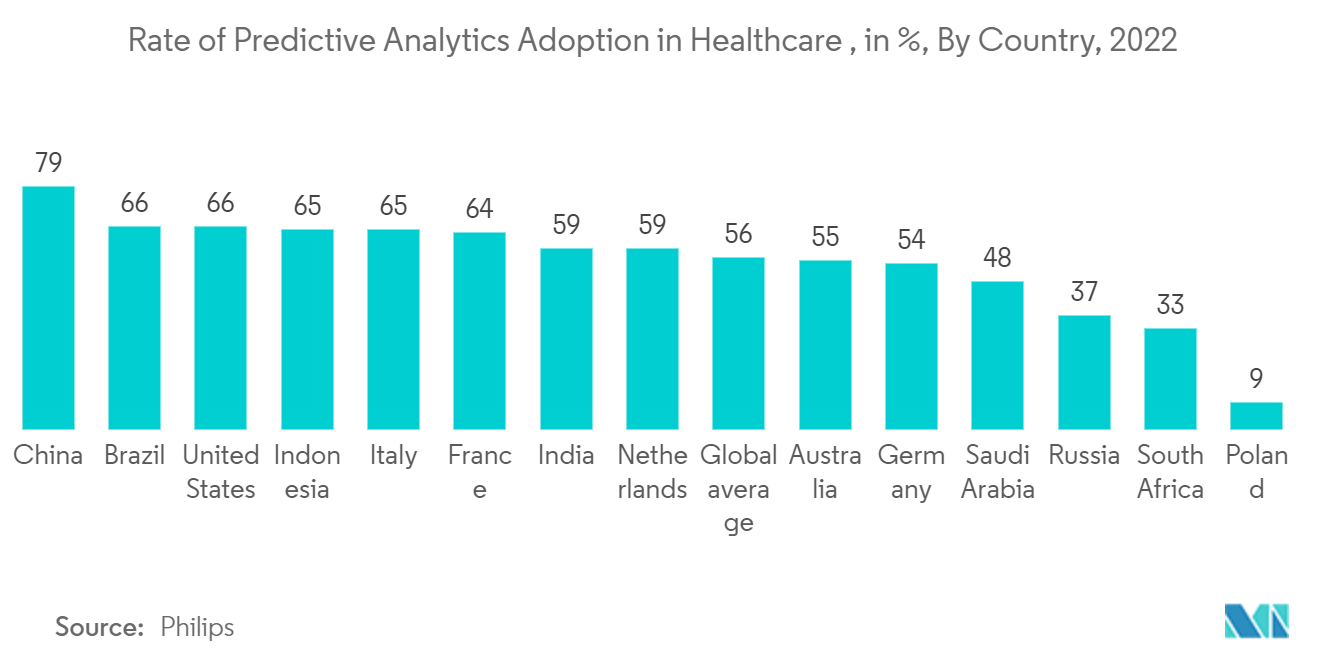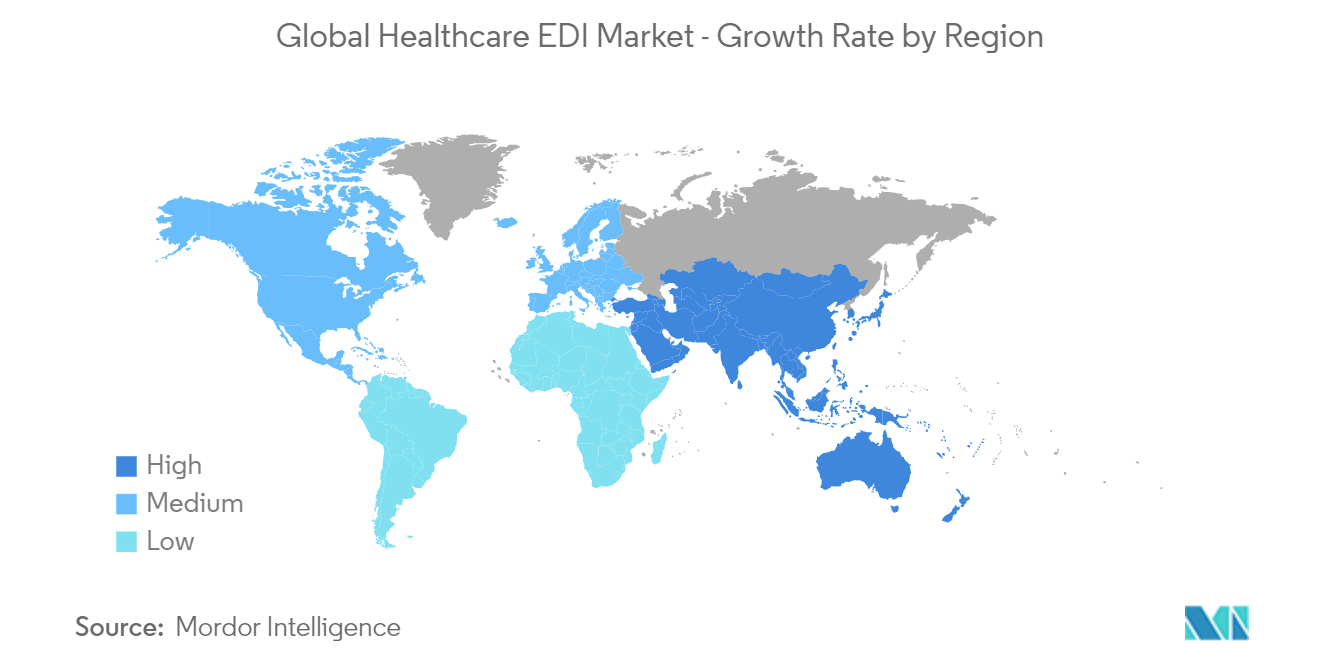Market Trends of Healthcare EDI Industry
Adoption of Big Data in Healthcare
- The use of Big Data in healthcare enables strategic planning by providing better insights into people's motivations. Care managers can compare check-up outcomes across demographic groups to see what variables dissuade people from seeking care. The University of Florida used Google Maps and open public health data to create heat maps for various topics, including population growth and chronic diseases. Academics then linked this data to the availability of medical care in the most hotly contested localities. The information gained from this allowed them to revise their delivery plan and add extra care units to the most troubled locations.
- Big Data and healthcare are critical in reducing the likelihood of hospitalization for specific individuals with chronic conditions. It can also aid in the prevention of degeneration. Healthcare facilities can give correct preventative treatment and, eventually, reduce hospital admissions by drilling down into insights such as medication type, symptoms, and the frequency of medical visits, among many others. This degree of risk computation will not only result in lower spending on in-house patient care but will also ensure that space and resources are available for those in most need. This is a clear demonstration of how analytics in healthcare can improve and save lives.
- Everything else, from patient care and treatment to long-term finances and beyond, will likely suffer if a medical institution's supply chain is weakened or fractured. That being said, the following examples of Big Data in healthcare emphasize the need for analytics in keeping the supply chain fluid and efficient from beginning to end. Both descriptive and predictive analytics models can improve pricing decisions, reduce supply variance, and optimize the ordering process. This allows medical institutions to survive in the long run while providing critical care to patients without potentially devastating delays, snags, or bottlenecks.
- The health insurance market has transitioned from a product-centric to a member-centric focus, with promising results. By analyzing big data with a customer relationship management (CRM) system, insurers can construct member profiles that give health insurance agents and reps a comprehensive perspective of each member. This data gives significant customer service insights, such as a better picture of who a member is, what they value, what issues they confront, their lifetime value as a customer, and more - all of which allows for more tailored, member-centric care. Furthermore, by employing chatbot technology and on-demand insurance, artificial intelligence can enable health insurers to customize individual coverage.
- According to Philips, as of February 2022, 92% of healthcare leaders polled in Singapore said they had already implemented or were in the process of implementing predictive analytics in their healthcare business, the highest adoption rate among all countries examined. China came in second with a 79% adoption rate, followed by Brazil and the United States, both at 66%.

North America is Expected to Hold a Significant Market Share
- The North American region is recognized worldwide for its advanced healthcare industry. The healthcare industry of the North American region is also among the leading adopter of advanced technologies both for treatment as well as operational purposes. The healthcare industry remains a priority sector in most North American countries; the studied market can expect robust growth opportunities from the region.
- In December 2022, The Centers for Medicare & Medicaid Services (CMS) issued the proposed rule, Adoption of Standards for Health Care Attachments Transactions and Electronic Signatures, and Modification to Referral Certification and Authorization Transaction Standard, on behalf of the United States Department of Health and Human Services (HHS). The proposed rule, if finalized, would establish requirements for "health care attachments" transactions, such as medical charts, x-rays, and provider notes that document physician referrals and office or telemedicine visits.
- Before the Health Insurance Portability and Accountability Act (HIPAA), the healthcare business relied on over 400 medical forms, most of which were paper-based. Protecting and securing healthcare information was a severe problem since healthcare data management was mainly manual and ad hoc. For example, a privacy legislation in the United States comprised a patchwork of industry-specific rules. According to the Center for Democracy and Technology, the pre-HIPAA period was marked by the absence of a national health privacy law, federal constraints on healthcare information processing, and a federal right permitting consumers to access their healthcare information.
- In March 2022, the Texas Department of Insurance, Division of Workers' Compensation (DWC), is seeking public feedback on proposed changes to two Electronic Data Interchange forms: EDI-01, Trading Partner Electronic Data Interchange (EDI), and EDI-02, Insurance Carrier or Trade Partner Medical Electronic Data Interchange (EDI) Profile. Articles 411.032 and 413.007 of the Texas Labor Code require insurance carriers to disclose claim and medical billing information to DWC. These forms enable insurance carriers and trading partners to update their trading partner profiles for the claim and medical EDI release 1.0 data submissions and appoint medical EDI compliance coordinators.
- Moreover, because most data is electronic, electronic data interchange technologies minimize the need for paper processing. According to the Workgroup for Electronic Data Interchange (WEDI), EDI healthcare can assist healthcare businesses to save USD1 per claim for health plans, USD1.49 for physicians, USD 0.86 for hospitals, and USD 0.83 for other parties. Being digital also speeds up the process because medical professionals can do duties like filling out claims with a few clicks using a digital interface. This approach decreases the possibility of errors and speeds up the entire procedure.


